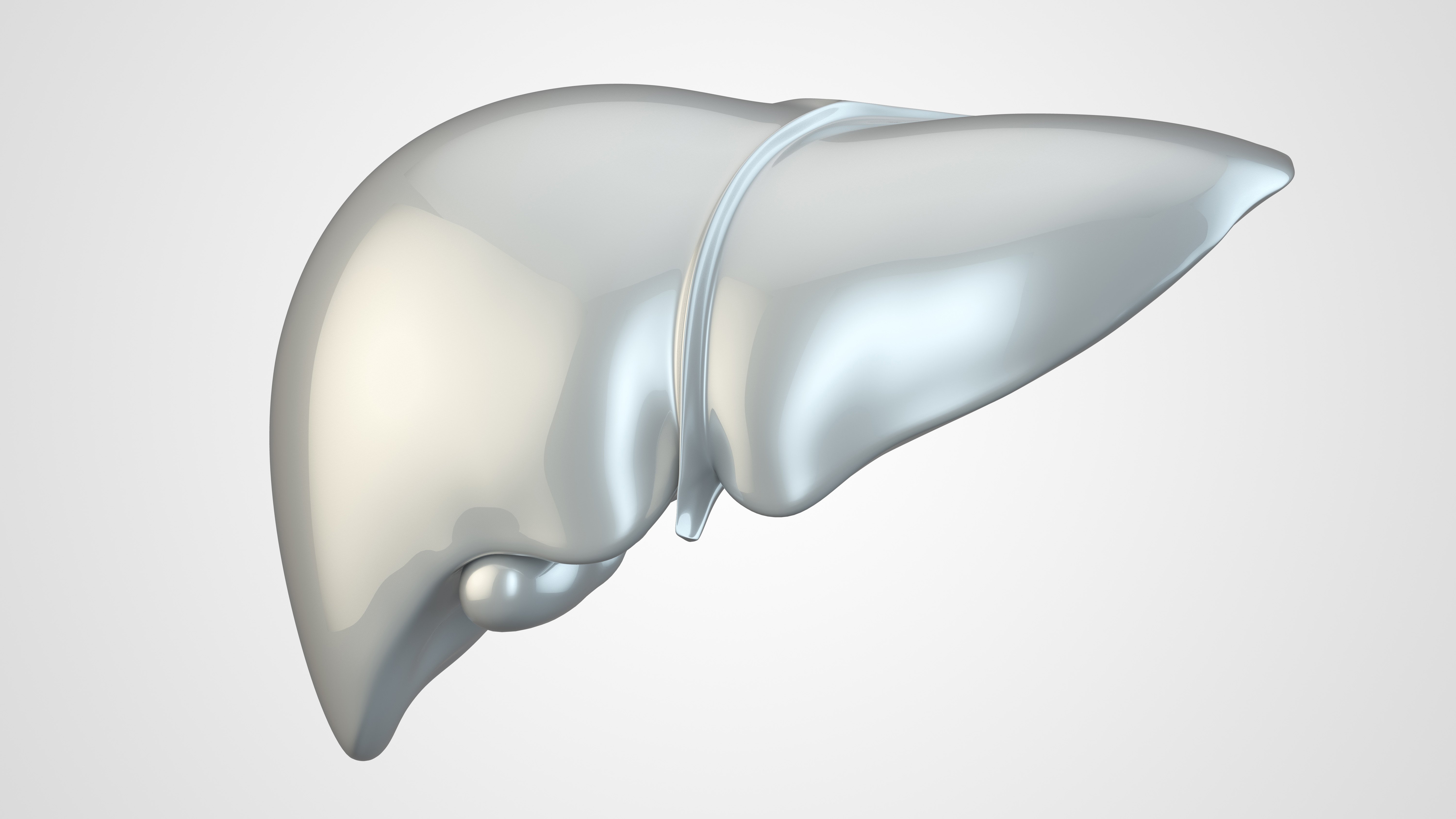预约演示
更新于:2025-09-09

Alfasigma SpA
更新于:2025-09-09
概览
标签
免疫系统疾病
皮肤和肌肉骨骼疾病
消化系统疾病
小分子化药
化学药
ADC
疾病领域得分
一眼洞穿机构专注的疾病领域
暂无数据
技术平台
公司药物应用最多的技术
暂无数据
靶点
公司最常开发的靶点
暂无数据
| 排名前五的药物类型 | 数量 |
|---|---|
| 小分子化药 | 19 |
| 化学药 | 2 |
| ADC | 1 |
关联
22
项与 Alfasigma SpA 相关的药物靶点 |
作用机制 JAK1抑制剂 |
原研机构 |
最高研发阶段批准上市 |
首次获批国家/地区 欧盟 [+3] |
首次获批日期2020-09-24 |
靶点 |
作用机制 FXR激动剂 |
最高研发阶段批准上市 |
首次获批国家/地区 美国 |
首次获批日期2016-05-27 |
作用机制 血红蛋白调节剂 |
在研机构 |
最高研发阶段批准上市 |
首次获批国家/地区- |
首次获批日期2011-01-01 |
139
项与 Alfasigma SpA 相关的临床试验NCT06865417
A Multicenter Study to Evaluate the Efficacy, Safety, Tolerability, and Pharmacokinetics of Filgotinib, With Single Arm Induction and Maintenance, in Pediatric Subjects (8 to <18 Years of Age) With Moderately to Severely Active Ulcerative Colitis
The aim of this study is to evaluate the efficacy, safety, tolerability, and pharmacokinetics (PK) of filgotinib as a treatment for UC in children and adolescents aged from 8 to less than 18 years.
Approximately 80 subjects from 8 to <18 years of age with moderately to severely active UC, including a minimum of 8 subjects from 8 to <12 years of age, will be enrolled in this study.
During the study, eligible subjects will take the investigational product (IP) on-site at Week 4, Week 10, and Week 22 (in the morning; with or without food). On all other days, subjects will take IP at home (in the morning; with or without food).
Subjects who do not achieve mMCS remission and/or MCS response at Week 10 will continue with induction treatment until Week 22. Subjects who do not achieve PUCAI remission at Week 22 will be permanently discontinued from the study.
Subjects will all receive a filgotinib dose targeting the same systemic exposure as that observed in adults with UC treated with 200 mg q.d.
Approximately 80 subjects from 8 to <18 years of age with moderately to severely active UC, including a minimum of 8 subjects from 8 to <12 years of age, will be enrolled in this study.
During the study, eligible subjects will take the investigational product (IP) on-site at Week 4, Week 10, and Week 22 (in the morning; with or without food). On all other days, subjects will take IP at home (in the morning; with or without food).
Subjects who do not achieve mMCS remission and/or MCS response at Week 10 will continue with induction treatment until Week 22. Subjects who do not achieve PUCAI remission at Week 22 will be permanently discontinued from the study.
Subjects will all receive a filgotinib dose targeting the same systemic exposure as that observed in adults with UC treated with 200 mg q.d.
开始日期2025-09-01 |
申办/合作机构 |
CTIS2023-507771-22-01
A Phase 3, Open-Label, Long-Term Safety Extension Study Evaluating the Safety and Tolerability of the Fixed-Dose Combination of Obeticholic Acid and Bezafibrate in Subjects with Primary Biliary Cholangitis - 977-311
开始日期2025-04-09 |
CTIS2024-513988-70-00
- VE-CIP1002/2021
开始日期2024-10-07 |
申办/合作机构 |
100 项与 Alfasigma SpA 相关的临床结果
登录后查看更多信息
0 项与 Alfasigma SpA 相关的专利(医药)
登录后查看更多信息
646
项与 Alfasigma SpA 相关的文献(医药)2025-08-01·AMERICAN JOURNAL OF PHYSIOLOGY-GASTROINTESTINAL AND LIVER PHYSIOLOGY
Farnesoid X receptor inhibits proinflammatory cytokine-induced epithelial necroptosis in vitro: implications for preservation of intestinal barrier function
Article
作者: Ní Chonghaile, Triona ; Adorini, Luciano ; Curley, Caitriona E. ; Keely, Stephen J. ; Lajczak-McGinley, Natalia K.
These studies demonstrate for the first time that FXR activation inhibits cytokine-induced necroptosis in vitro, an effect that may underlie protection against dysregulated barrier function in the setting of intestinal inflammation. These data support the potential for targeting FXR to promote epithelial barrier function in treatment of IBD.
2025-06-01·HEPATOLOGY
Hepatic real-world outcomes with obeticholic acid in primary biliary cholangitis (HEROES): A trial emulation study design
Article
作者: Mayne, Tracy J. ; Kareithi, Dorcas N. ; Smith, Rachel ; Kowdley, Kris V. ; Chu, Yucheng Julia ; Fried, Michael W. ; Breskin, Alexander ; Brookhart, M. Alan ; Ness, Erik ; Hiu, Shaun ; Jones, David ; Hansen, Bettina E. ; Seeger, John D. ; Li, Jing ; Bessonova, Leona ; Trivedi, Palak J. ; Mells, George ; Hirschfield, Gideon M. ; Wason, James ; Coombs, Charles
Background and Aims::
Primary biliary cholangitis is a rare, progressive liver disease. Obeticholic acid (OCA) received accelerated approval for treating patients with primary biliary cholangitis in whom ursodeoxycholic acid failed, based on a surrogate endpoint of reduction in ALP. Analysis of the long-term safety extension with 2 external control groups demonstrated a significant increase in event-free survival in OCA-treated patients. This fully real-world evidence study assessed the effect of OCA treatment on clinical outcomes.
Approach and Results::
This trial emulation used data from the Komodo Healthcare Map claims database linked to US national laboratory, transplant, and death databases. Patients with compensated primary biliary cholangitis and intolerance/inadequate response to ursodeoxycholic acid who initiated OCA therapy were compared with patients who were OCA-eligible but not OCA-treated. The primary endpoint was time to the first occurrence of death, liver transplant, or hospitalization for hepatic decompensation, analyzed using a propensity-score weighted Cox proportional hazards model. Baseline prognostic factors were balanced using standardized morbidity ratio weighting. For the primary analysis, 4174 patients contributed 11,246 control index dates, and 403 patients contributed OCA indexes. Weighted groups were well balanced. Median (95% CI) follow-up in the OCA and non-OCA arms was 9.3 (8.4–10.6) months and 17.5 (16.2–18.6) months (weighted population; censored at discontinuation). Eight events occurred in the OCA arm and 32 in the weighted control (HR = 0.37; 95% CI = 0.14–0.75; p < 0.001). Effects were consistent for each component of the composite endpoint.
Conclusions::
We identified a 63% reduced risk of hospitalization for hepatic decompensation, liver transplant, or death in OCA-treated versus non–OCA-treated individuals.
Trial Registration::
HEROES; ClinicalTrials.gov NCT05292872.
2025-05-01·CTS-Clinical and Translational Science
Safety, Tolerability, Pharmacokinetics, and Pharmacodynamics of INT ‐787, a Novel Farnesoid X Receptor Agonist, in Healthy Volunteers: A Phase 1 Trial
Article
作者: Van De Wetering, Jeroen ; Callahan, Jennifer ; Burkey, Jennifer ; Capozza, Thomas ; Erickson, Mary ; Kerb, Reinhold ; Kryzhanovskaya, Ludmila
ABSTRACT:
Aberrant farnesoid X receptor (FXR) signaling is implicated in cholestatic, inflammatory, and fibrotic liver diseases. In preclinical/clinical studies, semisynthetic bile acid‐derived FXR agonists markedly improved hepatic function in various conditions. INT‐787, a novel hydrophilic semisynthetic bile acid FXR agonist, has demonstrated a reduction in inflammatory and fibrotic markers and regulation of bile acid/lipid metabolism. This first‐in‐human, randomized, placebo‐controlled phase 1 study assessed the safety, tolerability, pharmacokinetics, and pharmacodynamics of INT‐787 and its equipotent metabolites in healthy volunteers by evaluating single ascending doses (SAD), multiple ascending doses (MAD), and food effect. Participants (n = 130) across all study portions were similar in age, race, and body mass index. In the SAD and MAD portions, the maximum plasma concentration (Cmax) and area under the curve (AUC) for total INT‐787 generally increased with dose. In the Food Effect portion, the mean Cmax of total INT‐787 was almost 2‐fold higher under fasted conditions compared with fed conditions; AUC0‐inf was unchanged. Steady state for total INT‐787 was reached by Day 7. In cohorts receiving ≥ 50 mg doses, the half‐life of total INT‐787 ranged from 21 to 55 h. INT‐787 metabolites exhibited increased concentrations after mealtimes despite morning dosing, consistent with endogenous bile acid behavior. Following single and multiple doses of INT‐787, decreases in C4 and increases in FGF‐19 levels were observed. Single and multiple oral doses were generally well tolerated; 4 adverse events of mild, transient pruritus not requiring interventions were reported at higher doses. These results warrant further investigation of INT‐787 in patients with liver‐related disorders.
521
项与 Alfasigma SpA 相关的新闻(医药)2025-08-29
Zydus plans to share full data from the trial at an upcoming scientific congress.\n Zydus Therapeutics has racked up a phase 2b/3 win in primary biliary cholangitis (PBC), clearing the path to a filing to establish the company as a challenger to Gilead Sciences, Intercept Pharmaceuticals and Ipsen.The phase 3 part of the trial randomized 149 people to receive the PPAR agonist saroglitazar or placebo. After 52 weeks of daily oral dosing, 48.5% of patients on the Zydus drug met the biochemical response, achieving the primary endpoint of the trial. Zydus plans to discuss the data with the FDA with hopes of filing for approval in the first quarter of 2026.If approved, saroglitazar will enter a market served by other drugs, including rival PPAR agonists. The FDA approved two PPAR agonists in PBC last year, clearing Gilead’s Livdelzi and Ipsen’s Iqirvo to compete for the market with Intercept’s FXR agonist Ocaliva.Gilead reported (PDF) a 62% biochemical response rate in the study that supported approval of Livdelzi. Ipsen’s Iqirvo achieved (PDF) a 51% biochemical response rate in its pivotal trial. Unlike the PPAR agonists, Intercept\'s Ocaliva carries a boxed warning. The FDA rejected a filing for full approval of the product in November—while leaving the accelerated nod in place—and flagged liver injury reports in December. When Zydus completed enrollment in its phase 3 trial last year, the lead principal investigator reported (PDF) “growing optimism” that saroglitazar can improve on the efficacy, safety and tolerability of existing treatments. The investigator was speaking before the approvals of Livdelzi and Iqirvo.The data shared by Zydus to date preclude cross-trial comparisons to assess whether saroglitazar has any potential advantages over the incumbents. The lack of a placebo response rates in Zydus’ release limits efficacy comparisons, though the absolute response rate of saroglitazar falls short of its rivals. The biotech\'s release also lacks data on itching and fatigue, symptoms the investigator named as areas in which Zydus may have an edge. Zydus plans to share full data from the trial at a future scientific congress.

临床3期临床结果上市批准加速审批
2025-08-20
Rezdiffra has a high growth ceiling, with it forecast to generate $4.8bn in global sales by 2031. Credit: Thx4Stock team / Shutterstock.com.
Madrigal Pharmaceuticals’ Rezdiffra (resmetirom) has been approved in Europe for the treatment of metabolic dysfunction-associated steatohepatitis (MASH) with moderate to advanced liver fibrosis, making it the first targeted therapy available for patients in the region with this severe form of liver disease.
The conditional marketing authorisation by the European Commission (EC) follows an approval recommendation by the European Medicines Agency (EMA)’s Medicinal Products for Human Use (CHMP) in June.
US pharma Madrigal expects to launch Rezdiffra in Europe on a country-by-country basis, starting with Germany in Q4 2025, as per a 19 August statement.
Stock in US-listed Madrigal closed 2.2% down to $379.55 per share at market close on 19 August, with investors likely downbeat amid a tangential development. Viking’s oral glucagon-like peptide-1 receptor agonist (GLP-1RA) drug posted disappointing trial results on the same day; Madrigal recently outlaid $2bn in an oral GLP-1RA licensing deal.
The regulatory approval means Madrigal is the only pharmaceutical company with an approved MASH drug in Europe. Rezdiffra was also the first MASH treatment to market in the US – winning US Food and Drug Administration (FDA)
approval in March 2024
.
MASH develops when there is a significant buildup of fat in the liver. Fibrosis, also known as scarring, is associated with MASH, and left untreated, it can lead to more serious damage, including cirrhosis.
GlobalData Strategic Intelligence
US Tariffs are shifting - will you react or anticipate?
Don’t let policy changes catch you off guard. Stay proactive with real-time data and expert analysis.
By GlobalData
Learn more about Strategic Intelligence
Madrigal estimates that approximately 370,000 patients have been diagnosed with MASH with moderate to advanced fibrosis in Europe. The disease is a form of non-alcoholic fatty liver disease (NAFLD) that has been billed as one of pharma’s highest potential growth areas.
Analysis by GlobalData forecasts sales of $25.7bn in 2032 across the seven major markets (the US, France, Germany, Italy, Spain, the UK, and Japan), meaning Madrigal’s first-to-market credentials in both the US and Europe could bode well for the drug’s growth.
GlobalData forecasts a high ceiling for Rezdiffra. The drug is expected to reach blockbuster status by the end of 2026, and, by 2031, Rezdiffra is forecast to generate $4.8bn in global sales.
GlobalData is the parent company of
Pharmaceutical Technology
.
Administered as a daily pill, Rezdiffra works by activating a thyroid hormone receptor that reduces liver fat accumulation.
While Madrigal was first to reach market in the US for a MASH treatment, it has since lost its crown of boasting the only approved therapy in the indication. Earlier this week, Novo Nordisk’s blockbuster drug Wegovy (semaglutide)
won FDA approval
for the treatment of MASH with moderate to advanced liver fibrosis, providing direct competition to Rezdiffra. Novo Nordisk has also applied for regulatory approval in the EU, setting up a second potential rivalry with Madrigal.
However, unlike Wegovy, which exerts its effect through agonism of the GLP-1 receptors, Madrigal’s treatment works directly in the liver itself.
GlobalData senior analyst Jay Patel says: “This approval allows Madrigal’s Rezdiffra to establish an early lead in the EU MASH market. Nevertheless, Novo Nordisk’s Wegovy is set to follow closely behind, with an approval expected imminently.
“It remains to be seen whether Rezdiffra will be able to carve out a niche once this takes place, given greater patient and physician familiarity with Wegovy, which is already approved for common MASH comorbidities such as obesity and type 2 diabetes mellitus.”
The EC based its approval on results from the Phase III MAESTRO-NASH trial, in which Rezdiffra achieved both fibrosis reduction and MASH resolution primary endpoints. The pill also reduced liver stiffness, liver fat, liver enzymes, and atherogenic lipids in the MAESTRO-NASH trial, and improved health-related quality of life.
Madrigal’s CEO Bill Sibold said: “MASH is the fastest-growing indication for liver transplantation in Europe, but until now, it had no approved treatment. The European labelling for Rezdiffra will set an important precedent for the entire field, with no biopsy required to qualify for treatment with Rezdiffra and a clear focus on a distinct MASH patient population with high unmet need.”
Before Madrigal and Novo’s approvals, MASH had become a graveyard of failed candidates. Gilead, AstraZeneca, and Intercept all fell short in getting candidates to market, all eventually
pivoting pipelines away
from the indication.
Pharmaceutical Technology Excellence Awards - The Benefits of Entering
Gain the recognition you deserve! The
Pharmaceutical Technology Excellence Awards
celebrate innovation, leadership, and impact. By entering, you showcase your achievements, elevate your industry profile, and position yourself among top leaders driving pharmaceutical advancements. Don’t miss your chance to stand out—submit your entry today!
Nominate Now
上市批准临床3期临床结果引进/卖出生物类似药
2025-08-11
·药筛
上周,正大天晴的奥贝胆酸片仿制药上市申请遗憾收到通知件。
这是继恒瑞医药后,第2家正式收到通知件的企业。
目前,还剩南京正大天晴和复旦张江两家的仿制药申请,还在审评审批中。
其实,早在2019年,南京正大天晴就按3类仿制,首家提交上市申请,一年后,正大天晴集团也提交了一个上市申请,但后来都被要求开展临床试验。
后来,两家企业都补做了三期临床试验,入组人数大约120人,相对来说,这个人数算少的了,成本也不算高。
但可惜的是,最终未被批准,这些成本,只能打了水漂。
复旦张江也完成了三期临床,并已提交上市申请;
杭州民生的临床还在进行中。
恒瑞没做临床,不批准,正大天晴做了临床,也未获批,其他企业会怎么想?
全球市场,奥贝胆酸片曾被寄予厚望,是NASH(非酒精性脂肪肝)、MASH治疗领域,最具潜力药物,如今却面临巨大撤市风险。
奥贝胆酸由Intercept公司开发的特异性法尼醇X受体(FXR)激动剂。
2016年5月,FDA有条件加速批准奥贝胆酸上市,作为原发性胆汁性肝硬化(PBC)的二线治疗,商品名Ocaliva,是20年来首个获批治疗PBC的药物。
2016年12月12日,产品在欧盟获批上市。
2022年,Advanz公司以4.05亿美元预付款,加4500亿美元的里程碑付款收购了奥贝胆酸原研药企Intercept美国以外所有市场权益。
2023年9月,意大利的Alfasigma公司,以总价约8亿美元收购Intercept公司。
企业年报数据显示,2021年,原研产品的最高年销售额3.6亿美元,2022年大幅下降。
后来,由于安全性问题,以及新的临床试验结果问题,2024年9月,欧盟撤销了Ocaliva上市许可,11月生效,产品只能退出欧洲市场。
2024年底,美国FDA拒绝了Ocaliva的完全申请批准。但产品仍然可以继续在美国市场使用。
国内市场,原研一直没有开展临床,也没提交进口上市申请。
产品还曾被纳入鼓励仿制药清单,有几个大企业入局仿制。
但看当前的进展,还会有其他企业继续参与仿制吗?
用摩熵药筛小程序,快速查询产品信息!
11批国采交流群已建,加客服微信,入群交流!
临床3期并购引进/卖出上市批准申请上市
100 项与 Alfasigma SpA 相关的药物交易
登录后查看更多信息
100 项与 Alfasigma SpA 相关的转化医学
登录后查看更多信息
组织架构
使用我们的机构树数据加速您的研究。
登录
或

管线布局
2025年11月02日管线快照
管线布局中药物为当前组织机构及其子机构作为药物机构进行统计,早期临床1期并入临床1期,临床1/2期并入临床2期,临床2/3期并入临床3期
药物发现
1
6
临床前
临床1期
1
1
临床2期
临床3期
3
10
批准上市
其他
44
登录后查看更多信息
药物交易
使用我们的药物交易数据加速您的研究。
登录
或

转化医学
使用我们的转化医学数据加速您的研究。
登录
或

营收
使用 Synapse 探索超过 36 万个组织的财务状况。
登录
或

科研基金(NIH)
访问超过 200 万项资助和基金信息,以提升您的研究之旅。
登录
或

投资
深入了解从初创企业到成熟企业的最新公司投资动态。
登录
或

融资
发掘融资趋势以验证和推进您的投资机会。
登录
或

生物医药百科问答
全新生物医药AI Agent 覆盖科研全链路,让突破性发现快人一步
立即开始免费试用!
智慧芽新药情报库是智慧芽专为生命科学人士构建的基于AI的创新药情报平台,助您全方位提升您的研发与决策效率。
立即开始数据试用!
智慧芽新药库数据也通过智慧芽数据服务平台,以API或者数据包形式对外开放,助您更加充分利用智慧芽新药情报信息。
生物序列数据库
生物药研发创新
免费使用
化学结构数据库
小分子化药研发创新
免费使用



